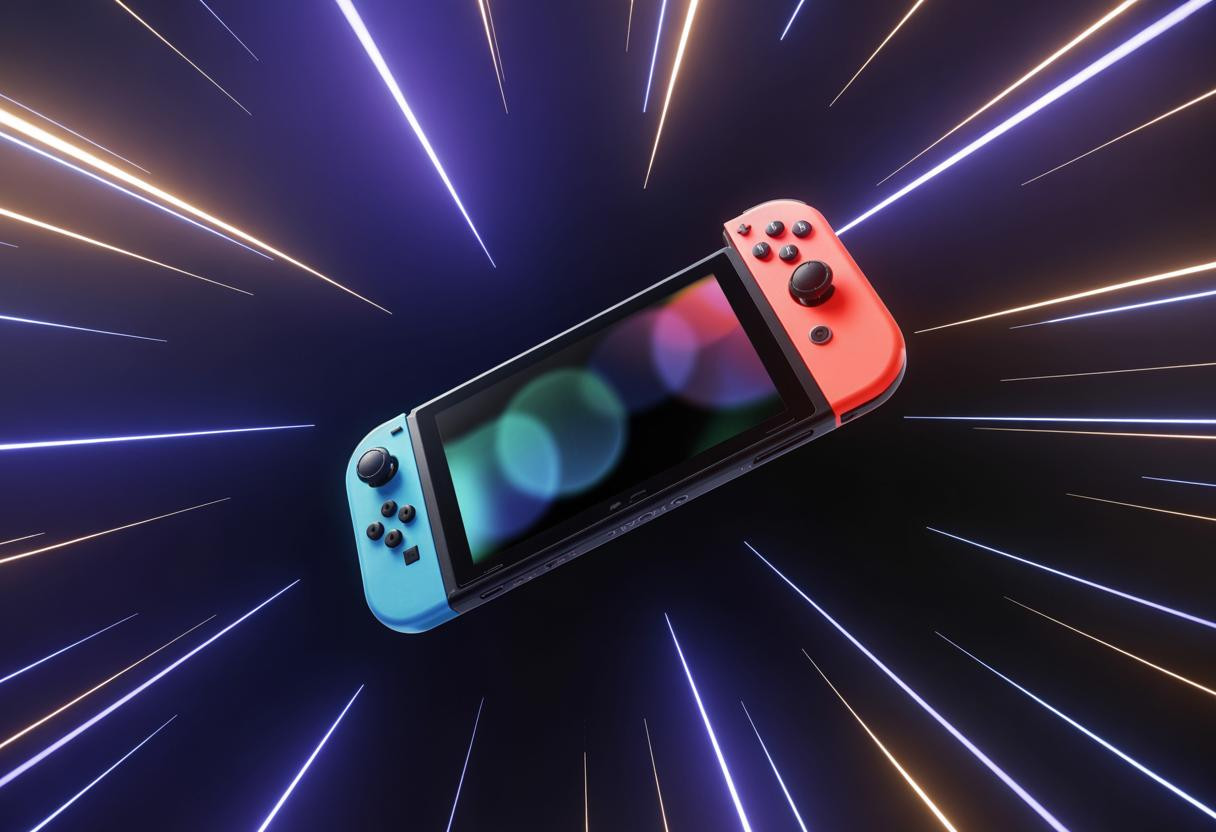Nintendo just changed the gaming landscape forever with the Switch 2’s June 5th launch, and the $449.99 price tag is sparking heated debates about whether premium portable gaming is worth the investment. Early adopters are already discovering that this isn’t just another console upgrade—it’s a complete reimagining of how we experience games both at home and on the go.
The technology breakthrough that’s redefining portable gaming
The Switch 2’s most striking upgrade is its 7.9-inch 1080p HDR display with 120Hz refresh rate, a massive leap from the original’s 6.2-inch 720p screen. When docked, the console delivers stunning 4K output at 60Hz, powered by Nvidia’s advanced Ampere architecture that brings ray tracing and DLSS technology to handheld gaming for the first time.
What makes this particularly impressive is the 12GB of LPDDR5X memory—nearly triple the original Switch’s capacity. This upgrade enables developers to create more complex, visually rich games that rival traditional console experiences. The magnetic Joy-Con controllers add another layer of innovation, providing enhanced stability and responsiveness that eliminates the drift issues that plagued the original design.
Industry analysts note that these specifications place the Switch 2’s handheld performance above the original’s docked mode, while its docked performance reaches PS4-level capabilities—a remarkable achievement for a portable system.
Ray tracing capabilities transform visual experiences
The integration of ray tracing technology allows for realistic lighting and reflections that were previously impossible on portable hardware. Games can now render 10 billion rays per second in handheld mode and 20 billion when docked, creating dramatically more immersive visual experiences.
Smart pricing strategy targets serious gamers over casual players
Nintendo’s $449.99 pricing positions the Switch 2 between budget-friendly options like the Xbox Series S and premium consoles like the PS5. This strategic positioning reflects a shift toward targeting dedicated gaming enthusiasts rather than the broader casual market that initially embraced the original Switch.
The pricing decision becomes more interesting when considering current shifting consumer priorities toward financial stability, where many households are carefully evaluating entertainment spending. Nintendo appears confident that the technical improvements justify the premium, banking on their exclusive game library to drive adoption.
Backwards compatibility reduces upgrade anxiety
The console’s full backwards compatibility with original Switch games significantly reduces the financial barrier to upgrading. Players can immediately access their existing game libraries while taking advantage of enhanced performance through optional upgrade packages.
Game library innovations set new industry standards
Mario Kart World represents Nintendo’s boldest departure from traditional racing games, introducing semi-open world elements that blend racing with exploration. This design philosophy could influence how other developers approach racing games, potentially reshaping the entire genre.
The backwards compatibility strategy extends beyond simple game support—Nintendo offers enhanced versions of popular titles that take advantage of the new hardware’s capabilities. This approach, similar to cost-saving strategies for major purchases, allows players to maximize their existing game investments while experiencing improved performance.
Developer support drives long-term success
Third-party developers are already announcing Switch 2 optimizations for existing titles, with major publishers committing to day-one patch support that unlocks enhanced graphics and performance features.
Market positioning challenges traditional console boundaries
Unlike competing consoles that focus on raw power, the Switch 2’s hybrid nature continues Nintendo’s strategy of offering unique gaming experiences. The ability to seamlessly transition between handheld and docked play addresses modern gaming habits where flexibility often trumps maximum performance.
Early pre-order data suggests strong consumer interest despite the higher price point, with initial stock selling out within hours of availability. This enthusiasm indicates that Nintendo successfully identified a market segment willing to pay premium prices for advanced portable gaming technology.
The future of gaming just became more portable
The Switch 2 represents more than just improved hardware—it’s Nintendo’s bet that the future of gaming lies in seamless, high-quality experiences that adapt to our increasingly mobile lifestyles. With its combination of cutting-edge technology and beloved game franchises, this console could define portable gaming for the next generation.
